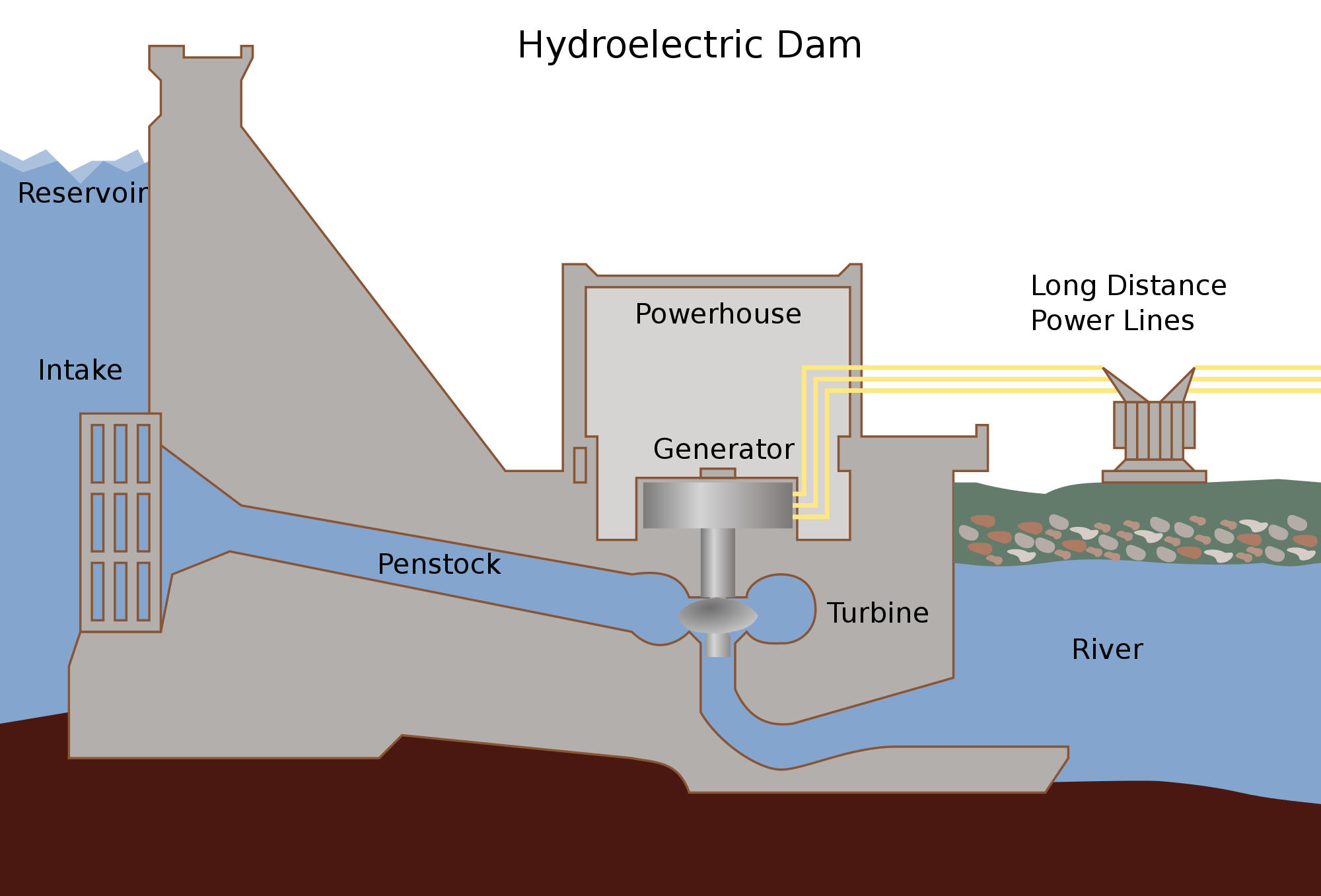
Hydroelectric Power Generation: Harnessing Water for Energy
Hydroelectric power generation stands as a cornerstone in the realm of renewable energy, leveraging the force of flowing water to produce electricity. In this article, we delve into the mechanics, benefits, and environmental considerations of hydroelectric power.
The Mechanics of Hydroelectric Power
At its core, hydroelectric power generation involves the conversion of the kinetic energy of flowing water into electrical energy. Dams or other structures are built on rivers to create reservoirs, and the controlled release of water from these reservoirs drives turbines. These turbines are connected to generators, producing electricity as they spin. It’s a clean and efficient process that has been harnessed for decades.
Different Types of Hydroelectric Systems
Hydroelectric power systems come in various forms, each tailored to specific environmental and geographical conditions. Run-of-river systems utilize the natural flow of rivers without significant storage, while reservoir systems, common in large dams, store water to regulate electricity production. Pumped storage systems, on the other hand, involve two reservoirs at different elevations, allowing for energy storage and peak demand management.
Environmental Impact and Benefits
While hydroelectric power generation is considered a renewable energy source, it’s essential to assess its environmental impact. Dams can alter ecosystems, affecting aquatic habitats and the flow of rivers. However, the benefits often outweigh the drawbacks. Hydroelectric power produces minimal greenhouse gas emissions compared to fossil fuels, reducing air pollution and mitigating climate change. Additionally, the reservoirs created can serve multiple purposes, including water storage and flood control.
Energy Efficiency and Reliability
One of the notable advantages of hydroelectric power is its energy efficiency and reliability. The conversion of water’s kinetic energy to electricity is highly efficient, with minimal energy losses in the process. Hydroelectric power plants can also respond quickly to changes in electricity demand, providing a reliable source of energy for base-load and peak-load requirements.
Global Significance and Capacity
Hydroelectric power holds significant global importance in the renewable energy landscape. Many countries rely heavily on hydroelectricity to meet their energy needs. China, Brazil, the United States, and Canada are among the top producers of hydroelectric power. The capacity of hydroelectric systems is vast, contributing a substantial share to the total electricity generation worldwide.
Challenges and Considerations
Despite its many advantages, hydroelectric power faces challenges and considerations. The construction of large dams can displace communities and alter ecosystems, raising social and environmental concerns. Sedimentation in reservoirs, changes in water temperature, and potential upstream and downstream impacts require careful management. Striking a balance between harnessing the energy of flowing water and minimizing environmental impact is a continuous challenge.
Technological Advancements in Hydroelectricity
Technological advancements play a crucial role in enhancing the efficiency and sustainability of hydroelectric power generation. Innovative turbine designs, fish-friendly turbine technologies, and improved fish passage systems aim to address ecological concerns. The integration of smart grid technologies allows for better management and optimization of hydroelectric power plants, contributing to a more adaptive and resilient energy infrastructure.
Community Engagement and Stakeholder Involvement
The development and operation of hydroelectric projects involve various stakeholders, including local communities, environmental organizations, and governmental bodies. Successful projects often prioritize community engagement, ensuring that the benefits of hydroelectric power extend to local populations. Sustainable and socially responsible practices are essential components of responsible hydroelectric development.
Future Prospects and Sustainable Hydro Solutions
Looking ahead, the future of hydroelectric power involves embracing sustainable solutions. Small-scale and micro-hydro projects can provide localized energy solutions with minimal environmental impact. Advances in fish-friendly technologies and environmental monitoring aim to address ecological concerns, making hydroelectricity a more sustainable and eco-friendly option for the future.
Exploring Hydroelectric Power Generation Further
To delve deeper into the world of hydroelectric power generation, visit Hydroelectric Power Generation. Explore the mechanics, benefits, and considerations of harnessing water for energy and gain insights into the evolving landscape of this renewable energy source.



